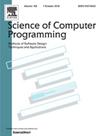Machine learning models for predicting software design effort
IF 1.4
4区 计算机科学
Q3 COMPUTER SCIENCE, SOFTWARE ENGINEERING
引用次数: 0
Abstract
Software design is a distinctive activity within the software development life cycle (SDLC). It is typically undertaken by an independent, specialized team, whose budget relies on the required person-hours prediction (i.e., effort). An over-prediction could cause project rejection before starting, whereas an under-prediction may result project cancellation before completion. A common practice for predicting the effort percentage by activity involves calculating it from the total SDLC effort. However, the reported design effort using this method varies widely from 0.62% to 50.35%. Another practice involves using prediction models; however, systematic literature reviews published up to 2025 indicate the absence of models specifically applied for software design effort prediction (SDEP) by existing only models addressing the total SDLC effort. Thus, the present study applies two models to SDEP reported as most accurate in the effort prediction field: support vector regression (SVR), and Multi-layer perceptron (MLP) neural network. Their parameters are optimized through genetic algorithms, and their performance is compared to that of a statistical regression model (SRM). All models were trained on seven data sets selected from an international public repository of software projects used in dozens of studies on software effort prediction. Results show that SVR performed statistically better than SRM in five data sets and equally on the remaining two. MLP outperformed SRM on three data sets and equally on the resting four. Consequently, both MLP and SVR can be used to SDEP.
用于预测软件设计工作的机器学习模型
软件设计是软件开发生命周期(SDLC)中的一项独特活动。它通常由一个独立的、专门的团队承担,其预算依赖于所需的人-小时预测(即工作量)。过度预测可能导致项目在开始之前被拒绝,而预测不足可能导致项目在完成之前取消。通过活动预测工作量百分比的常见做法包括从总SDLC工作量中计算工作量百分比。然而,使用这种方法报道的设计努力从0.62%到50.35%不等。另一种做法是使用预测模型;然而,直到2025年发表的系统文献综述表明,通过解决全部SDLC工作的现有模型,缺乏专门应用于软件设计工作预测(SDEP)的模型。因此,本研究将支持向量回归(SVR)和多层感知器(MLP)神经网络两种模型应用于SDEP,这两种模型在努力预测领域中被认为是最准确的。通过遗传算法对其参数进行优化,并与统计回归模型(SRM)的性能进行比较。所有的模型都是在七个数据集上进行训练的,这些数据集是从软件项目的国际公共存储库中选择的,这些存储库用于几十项软件工作预测的研究。结果表明,SVR在五个数据集上的表现优于SRM,在其余两个数据集上表现相同。MLP在三个数据集上优于SRM,在其余四个数据集上表现相同。因此,MLP和SVR都可以用于SDEP。
本文章由计算机程序翻译,如有差异,请以英文原文为准。
求助全文
约1分钟内获得全文
求助全文
来源期刊

Science of Computer Programming
工程技术-计算机:软件工程
CiteScore
3.80
自引率
0.00%
发文量
76
审稿时长
67 days
期刊介绍:
Science of Computer Programming is dedicated to the distribution of research results in the areas of software systems development, use and maintenance, including the software aspects of hardware design.
The journal has a wide scope ranging from the many facets of methodological foundations to the details of technical issues andthe aspects of industrial practice.
The subjects of interest to SCP cover the entire spectrum of methods for the entire life cycle of software systems, including
• Requirements, specification, design, validation, verification, coding, testing, maintenance, metrics and renovation of software;
• Design, implementation and evaluation of programming languages;
• Programming environments, development tools, visualisation and animation;
• Management of the development process;
• Human factors in software, software for social interaction, software for social computing;
• Cyber physical systems, and software for the interaction between the physical and the machine;
• Software aspects of infrastructure services, system administration, and network management.
 求助内容:
求助内容: 应助结果提醒方式:
应助结果提醒方式:


